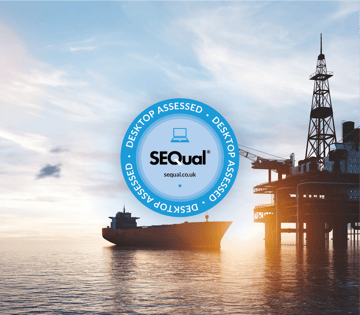The Persian Gulf, a strategic waterway bordered by several Middle Eastern countries, is a pivotal region for global economic activities, particularly in the energy sector. The Gulf's maritime weather significantly influences these activities, with patterns that are occasionally severe, affecting marine operations. Let’s have a look at the most prevalent (maritime) weather conditions that impact this region.
Meteorological phenomena in and around the Persian Gulf
There are several important meteorological phenomena in the region. We will be talking about Shamals winds, land-sea circulations, and tropical systems.Shamal winds
You cannot address the weather in the Gulf without mentioning “shamals”. The Arabic word for “north”, a shamal is a northwesterly wind pattern blowing over Iraq (or north wind pattern blowing over Iran) and the Gulf states. They are both prevalent during winter and summer and can reach speeds of up to 60 or even 70 km/h. They are mostly active in the day, and calm down during the night.During the winter, shamal winds are associated with dust storms that reduce visibility, posing significant hazards to maritime navigation and port operations. Reduced visibility from dust storms further complicates navigation. Ports in the region, including those in Dubai, Abu Dhabi, and Kuwait, often have to halt operations during severe weather events.
In the summer, these winds contribute to rough maritime conditions. Cold fronts associated with the shamals most of the time don’t come with showers, but they do come with the strong NNW winds on the backside. The strong wind will pass through, resulting in substantial waves in the Persian Gulf.
When they do contain showers though, it’s mostly a thunderstorm, situated on the remnants of the cold front.
Land-sea circulations
The climate in the Persian Gulf is characterized by high temperatures (especially in summer it can be over 40 degrees Celsius) and arid conditions on land. The difference with the temperature of the Persian Gulf will create land-sea circulations like land breezes and sea breezes.
Notably for marine operations, sea breezes have an increasing effect on the humidity and contribute to very local precipitation, including convective thunderstorms.
The movement of air associated with land-sea circulations can impact air quality a lot. When it carries dust, it affects visibility for operations. Especially in nearshore operations, like land reclamation projects (artificial island) near the coast of the United Arab Emirates, windblown dust or sand at the front of a low-pressure area, can be an issue.
 Photo: Envato
Photo: Envato
So land-sea circulations are particularly important in moderating coastal weather because they can create microclimates that can differ significantly from the interior regions.
Tropical systems
Sometimes the remnants of a tropical cyclone coming from the Arabian Sea can enter the Persian Gulf. These indirect effects are rare though. However, during the last two decades, the number of tropical cyclone events in the Arabian Sea has increased dramatically. And 72% of cyclones in the Arabian Sea have reached category 3 or higher since 2007. Cyclone Gonu being a good example: in 2007 it brought heavy rain and strong winds to the Persian Gulf. These events, though infrequent, can have significant impact on the region’s (maritime) infrastructure and safety.Like to read more of these insights? Subscribe to our marine newsletter:



